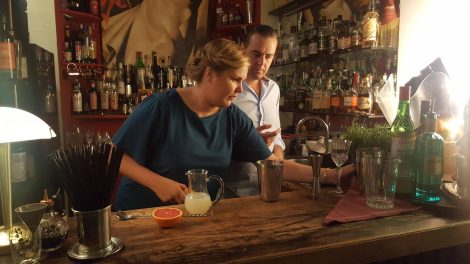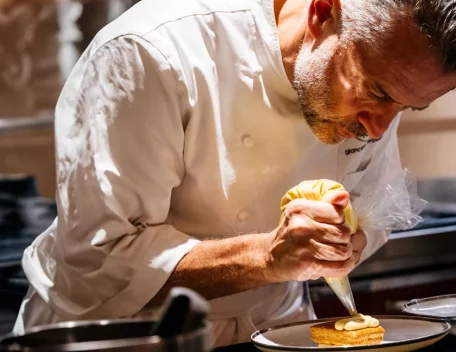Once again, Tuscany confirms itself as the most awarded region in the Guide, with no less than 89 Tre Bicchieri awards. The number of finalist wines, or Due Bicchieri rossi, is 327. These results are widely justified due to the vast territory, range of denominations, variety of styles, and terroirs. There is a dynamism, a desire to grow and deepen the bond with the land that knows no rest. And the excellent results do not come only from the best-known denominations like Chianti Classico, Brunello di Montalcino, or Bolgheri Rosso. Here, we focus on the best wines of the Carmignano DOCG - we tasted and appreciated some labels during the L'Altra Toscana event - covering 135 hectares registered on the eastern side of the Montalbano mountain range, in the hilly area of the municipalities of Carmignano and Poggio a Caiano, in the province of Prato, where wine was already produced in Etruscan times. The Carmignano production area was established in 1716 by the decree "Sopra la Dichiarazione dé Confini delle quattro Regioni Chianti, Pomino, Carmignano, e Val d'Arno di Sopra" issued by Grand Duke Cosimo III de' Medici, which set the boundaries of the wine regions. In 1975, thanks to the initiative of Carmignano winemakers, the area obtained a DOC, which became DOCG in 1990. The ventilated climate, high temperature variations, and well-distributed rainfall, even in summer, make the Carmignano area particularly suitable for vine cultivation, favoring the maturation of the grapes. The resulting wine is structured with a fine and intense bouquet, suitable for aging (the regulations require an aging of 10 months in oak and/or chestnut barrels and 12 months for Carmignano Riserva DOCG).
Carmignano DOCG. The grapes
Carmignano wine is mainly made from the Sangiovese grape, combined with Canaiolo Nero (max. 20%), Cabernet Franc and Cabernet Sauvignon (10-20%), and possibly white grapes (max. 10%) from Trebbiano Toscano, Canaiolo Bianco, and Malvasia del Chianti. The types include Carmignano DOCG and Carmignano Riserva DOCG.
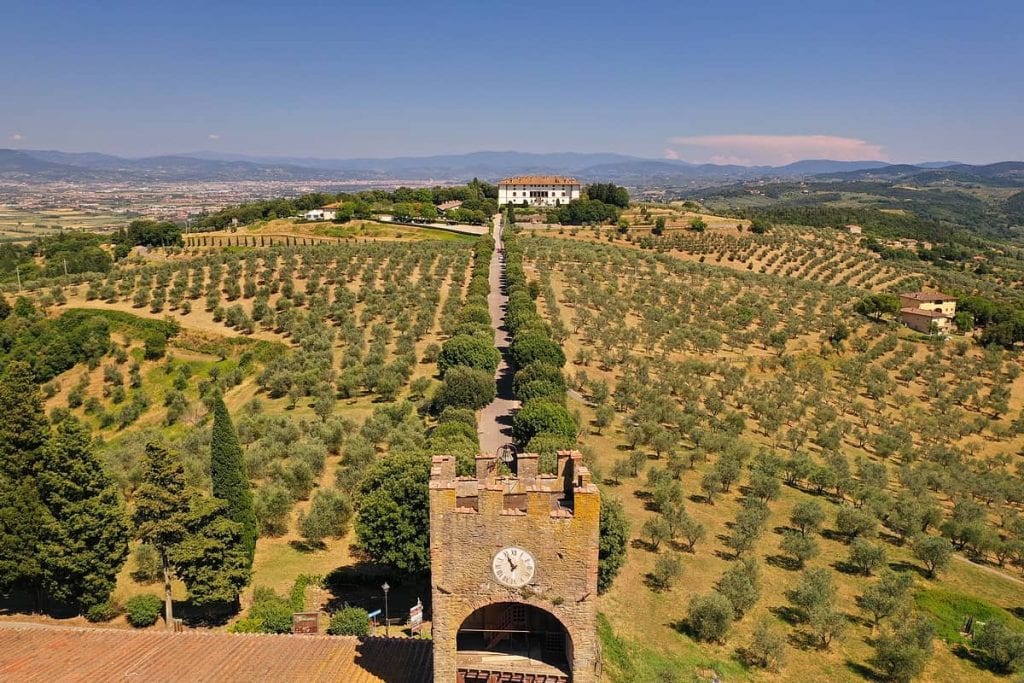
Carmignano - Tuscany - view from Artimino
The best Carmignano wines awarded Tre Bicchieri and Due Bicchieri Rossi
Here are the best Carmignano wines that received Tre Bicchieri and Due Bicchieri Rossi in the Gambero Rosso's 2024 Vini d'Italia Guide.
The Carmignano Arrendevole Riserva '20 is savoury and harmonious, striking with its diluted and brilliant color, an extremely current version of the denomination that stands out for the finesse of its aromas and the juicy and smooth sip, with great depth and a lively, captivating finish. Tenuta Ceri, awarded as Emerging Winery, is a new reality that immediately stood out for the precision of its wines and territoriality. The company was acquired by Luca Ceri, a well-known architect from Prato, and is managed by his dynamic son Edoardo.
The project of a sail-shaped accommodation structure in the center of a large vineyard is still under development, but the winery premises are already completed, spacious and functional with the precise choice of vinifying in concrete tulips, relying on the expertise and sensitivity of Alberto Antonini.
In perfect harmony with a beautiful vintage like '19, the Carmignano Grumarello Riserva combines immediacy of sip and depth, marked by a fresh vein accentuated by balsamic and menthol notes. The Carmignano Poggilarca '20 is a perfect example of a structured wine, where the power of the sip reveals itself gently, through smooth tannins and a long finish of black fruits, wet earth, and intriguing vegetal nuances.
The Medicean Villa La Ferdinanda, dating back to 1596 and now a UNESCO World Heritage Site, is the heart of the estate, located in the medieval village of Artimino, in the land favored by the Medici family. The property has belonged to the Olmo family since the '80s, and the management is now entrusted to Annabella Pascale and Francesco Spotorno Olmo. The vineyards extend over two historic territories: Carmignano and Chianti Montalbano, which, although close, fall into two different provinces: Prato and Florence. A careful study of the soils has allowed the identification of the most suitable production units for the different varieties grown on the estate.
- Carmignano Grumarello Ris. 2019 - Tenuta di Artimino
- Carmignano Poggilarca 2020 - Tenuta di Artimino
Rich and dense, the Carmignano Riserva '20 from Tenuta Le Farnete Cantagallo offers a dark and silky sip, with a long finish of slate and menthol. The portion of Cabernet expresses itself decisively with elegance in the smooth tannins and tasty herbaceous hints. Enrico and Dario Pierazzuoli manage both family estates: Tenuta Cantagallo, located in the municipality of Capraia e Limite, on the southern side of Montalbano, owned since 1971, and Le Farnete in Carmignano, acquired in 1990.
The company's philosophy is well expressed on the labels of the bottles where the phrase "a bottle of wine for every vine stock" appears. In full respect of Carmignano tradition, they grow Sangiovese and Cabernet Sauvignon; while in the galestro-rich and skeletal soils of Chianti Montalbano, Sangiovese dominates along with Trebbiano and Malvasia, used for the production of Vin Santo.
A solid performance for Carmignano Carmione '21, which reveals a solid mouthfeel highlighted by a marked and flavorful tannin. On the nose, it condenses blackcurrant and blackberry with memories of chocolate and cloves. The Pratesi family has lived in the small Lolocco farm since 1875; since the '90s, Fabrizio has been running the estate and has gradually expanded the vineyard area by purchasing new vineyards. Becoming a full-time winemaker, he personally handles all stages of production, from agronomy to winemaking. The result is wines of strong personality, mainly reds, with the traditional varieties of the Carmignano area: Sangiovese, Merlot, and Cabernet Sauvignon, grown under the name "uva francesca," present in these areas since the 16th century.
A great interpretation for the Carmignano Montefortini Podere Lambarda '20, with a compact and juicy sip, played on acidic tension and perfectly integrated tannins, with a slight spiciness that enhances the sweet notes of small black fruits. The Fattoria Ambra has been owned by the Romei Rigoli family since the late 19th century. It is guided by Beppe Rigoli, heart and soul in the vineyard and cellar, together with his wife Anna, also an agronomist. A pioneer in introducing the concept of cru to Carmignano, he has vineyards distributed in four of the most vocated units of the area: the Montalbiolo hill, where galestro and tuff prevail, Elzana with a greater presence of clays, Santa Cristina in Pilli characterized by alberese, and Montefortini Podere Lombarda with looser soils. Wines from each cru are bottled separately.
In the Carmignano Riserva '20 from Piaggia, the international character shows itself with ease through elegant spiciness and friggitello sweetness. The historic estate, founded by Mauro Vannucci in the mid-'70s and now run by his daughter Silvia, has always been a reference point for the Carmignano area. The estate's vineyards enjoy optimal exposures for this area. The winery, practically camouflaged in the hill, has trees and plants growing on the roof. Within these walls, the estate's grapes are vinified: Sangiovese, Cabernet Sauvignon, and Merlot, worked with intelligence and passion. From the Poggio de' Colli vineyard comes Cabernet Franc, vinified in purity and now a true national celebrity.
Clear and harmonious is the Carmignano Villa di Capezzana '19, where the fruit, prominently featured, meets mint, chocolate, and medicinal herbs. At Capezzana, wine has been produced since 804, in one of the oldest denominations in Tuscany: Carmignano. But the estate is first and foremost the story of a family, the Contini Bonacossi, owners since the '20s. At Capezzana, there is an air of cleanliness in gestures and ways, a sincere love for the land and its fruits. Capezzana also boasts a cellar with an incredible history of vintages, a testament to the aging potential of Carmignano wines.

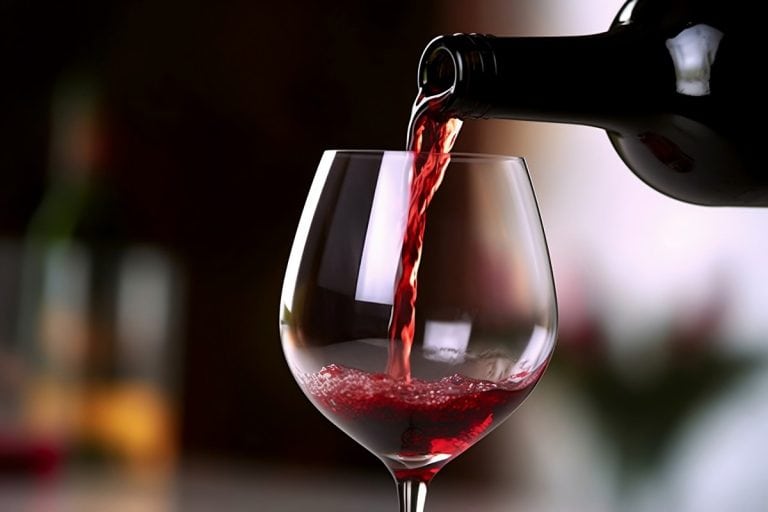
 What changes for the export of Italian wines to China under the new regulations?
What changes for the export of Italian wines to China under the new regulations? “Forget dealcoholised wines. The future is Komb(w)ine.” Moser and Ravizza present a new grape must-based product
“Forget dealcoholised wines. The future is Komb(w)ine.” Moser and Ravizza present a new grape must-based product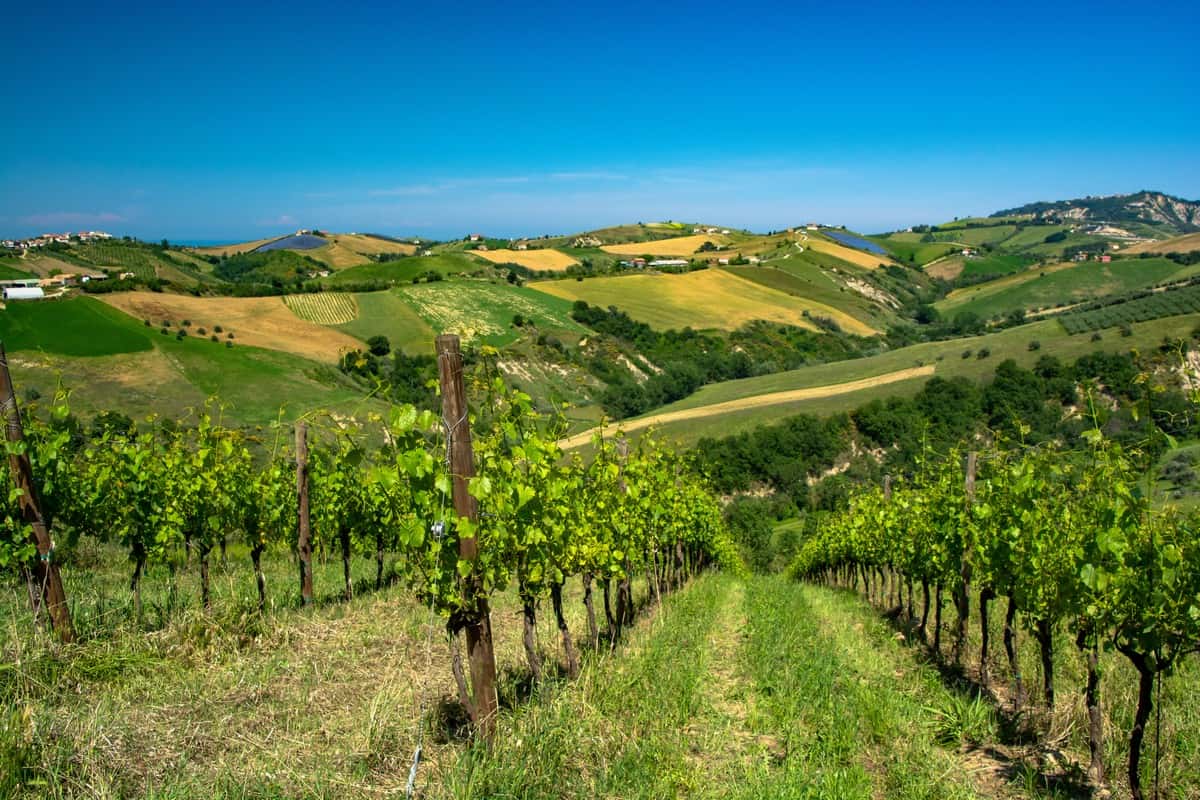 Global wine consumption at a historic low and vineyards in decline. The OIV report outlines a 2024 to forget
Global wine consumption at a historic low and vineyards in decline. The OIV report outlines a 2024 to forget Oenologist Riccardo Cotarella will also produce dealcoholised wine: "My first bottle will be out in October and it won’t be bad"
Oenologist Riccardo Cotarella will also produce dealcoholised wine: "My first bottle will be out in October and it won’t be bad"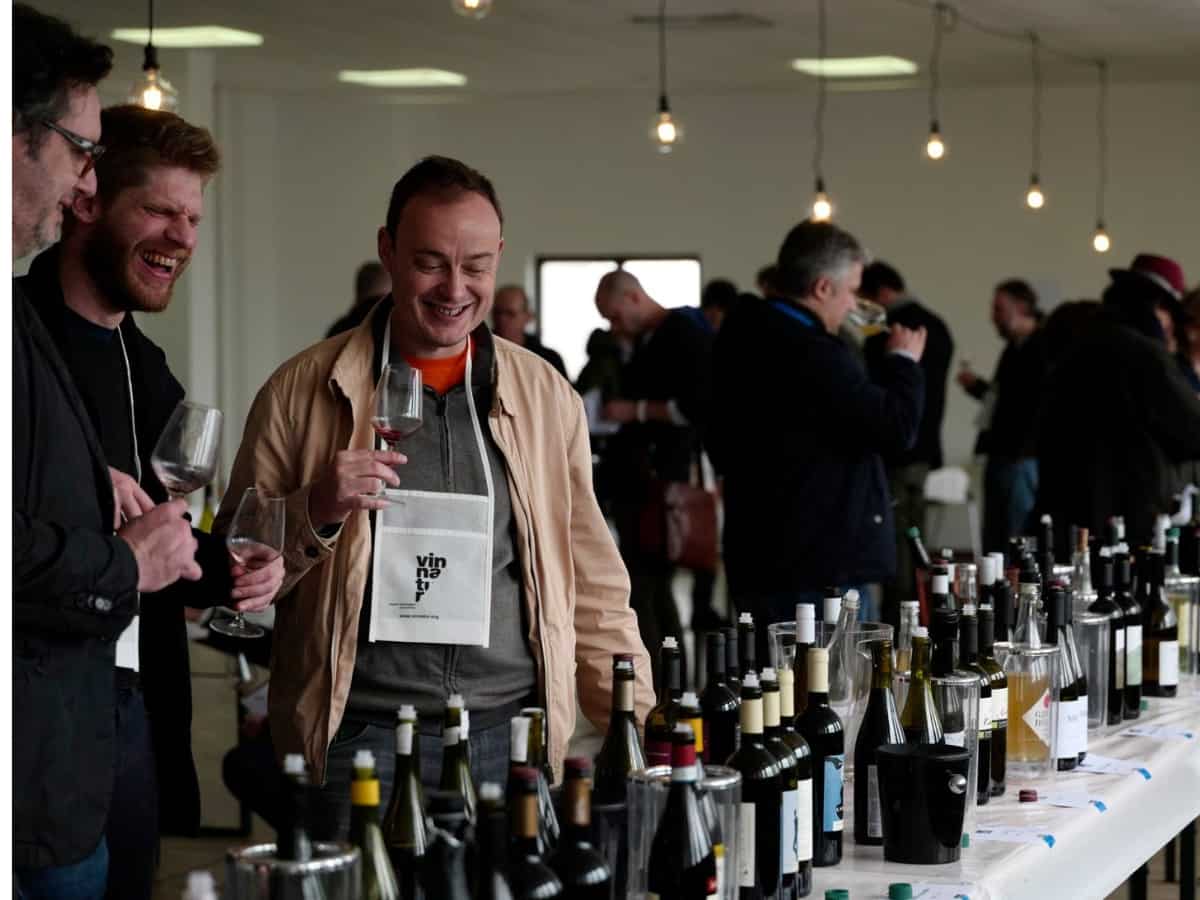 Dear natural wine world, enough with the constant polemics. If you don’t want to self-ghettoise, self-criticism is needed
Dear natural wine world, enough with the constant polemics. If you don’t want to self-ghettoise, self-criticism is needed



